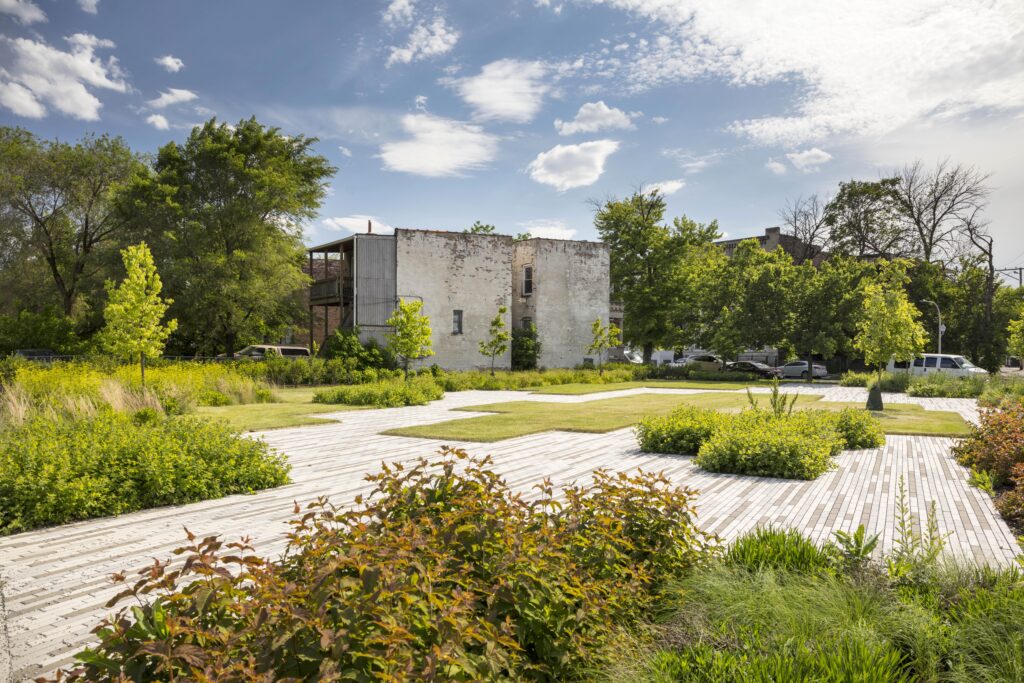Spurring Chicago’s growth during a global pandemic
Denise Casalino, Executive Vice President and National Cities Manager for AECOM, shares her plans to help the city of Chicago utilize short and long-term stimulus funding to support proactive economic recovery planning. She also offers insights on the office of the future.
The U.S. is fighting to remain resilient during the coronavirus pandemic. Now, as policymakers consider the path to recovery, infrastructure investment is emerging as a powerful economic stimulus tool. What solutions are necessary to bolster an economic recovery?
As with all crises, we are likely to witness vast changes in the economic, political, social, environmental and technological landscape, which, in turn, will impact infrastructure requirements. The recovery will need solutions that support and build on one another. Changes may range from zoning policy and social programs to integrated infrastructure investments and sector-specific growth opportunities. Even as we consider the potential adjustments, the overarching importance lies in extending scarce resources so that all Chicagoans benefit from the investments. Identifying potential co-benefits of every solution will be critical, as will focusing on the city’s most vulnerable communities, and understanding the economic feasibility and fiscal impacts of proposed investments.
How can infrastructure drive economic recovery?
Infrastructure programs have a long history of creating sustainable jobs and transforming cities and states. Investing in infrastructure has the power to create opportunities for tomorrow by restoring businesses and consumer confidence, as well as adding more jobs. Nearly 75 miles of streets were built in Chicago in the 1930s as part of the New Deal’s Works Progress Administration program that put millions of Americans to work on infrastructure projects during the Great Depression. According to the American Public Transportation Association’s 2020 Economic Impact of Public Transportation Investment report, enhanced infrastructure investment that’s sustained over 20 years can have five times the total effect on the economy as the annual expenditure.
How can innovation help secure resources and address the climate emergency?
The dual demands of climate change and urbanization are putting urban infrastructure under severe pressure. Meeting these challenges will require traditionally risk-averse industries such as water, transport and commercial real estate to change their operations. As an example, the combination of stimulus-funded infrastructure and environmental factors — such as public desire to maintain the air quality benefits of lockdown — could lead to an acceleration of electric and autonomous vehicles on our roads.
Advanced technologies can also help make our urban centers more resilient. Buildings that use a combination of technology and electric grid improvements can play a critical role in tackling climate challenges while reducing costs and improving health in the form of indoor environment for owners and tenants.

How can AECOM help Chicago maximize its post-pandemic economic recovery?
There’s a growing recognition that in measuring value, we’ve been overly focused on narrow economic measures instead of wider social benefits. As governments move toward broader measures of societal progress, the challenge for built-environment professionals is to identify how they can best use their expertise to holistically benefit communities.
One great example of using infrastructure benefits for economic and social benefits is Chicago’s resilient/sustainable commercial corridor revitalization and more specifically the need and demand for urban projects in communities to drive economic development.
At AECOM, we want to bring together our resources to support communities’ needs. The best projects can and do have clear and multiple returns on investment with benefits from creating jobs to reducing neighborhood flooding and traffic accidents.
Our teams could also help the City to identify locations suited for manufacturing as part of industrial corridor revitalization efforts. Given the economic impacts of the coronavirus, these corridors generate additional opportunities for investment and development, and Chicago’s transportation network of railways, waterways and highways, would contribute to the success of the manufacturing facilities.
For many, the pandemic has completely changed work habits and rituals. How will these collective differences shape the office of the future?
Every organization must renew their focus on creating safe and healthy environments — both physically and mentally — while continuing to develop workplaces that inspire employees. We must rethink the traditional work environment as many have realized that they can work from any location. The tangible result will be a shift in design strategies, for example, altering workspace locations for increased distance between employees.
AECOM is helping our clients to maximize their building technology, empowering leaders and enabling them to monitor and better control workspaces. These ongoing changes will require adjustments to understand what is optimal for each building, each office and in many cases, each workforce team.






